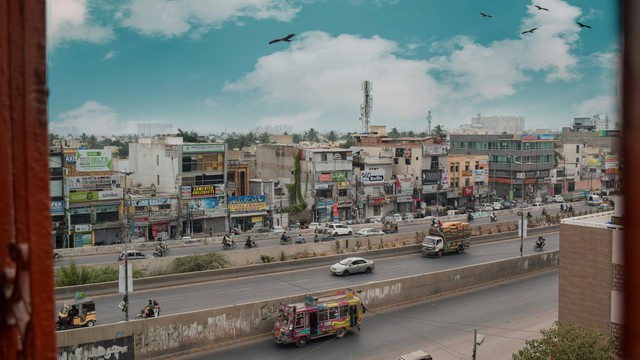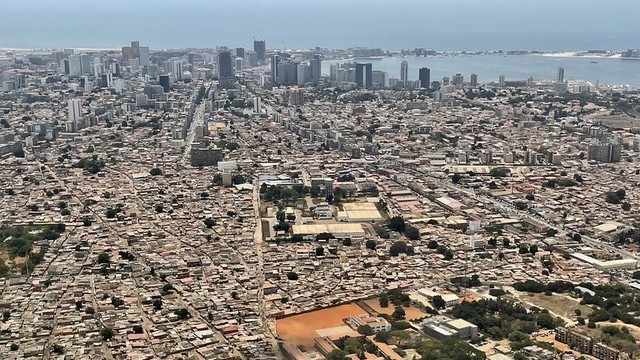Getting housing back onto the development agenda in the time of COVID-19
Ahead of this year’s World Habitat Day themed ‘Housing for All’, David Satterthwaite sets out why adequate housing is fundamental for health, safety, inclusion in society, and access to employment and services – and for preventing the spread of COVID-19.


Appropriate housing is essential for our health and wellbeing and social and inclusion, but half of the population of many cities live in illegal settlements without access to basic services (Photo: Adam Cohn via Flickr, CC BY-NC-ND 2.0)
No one wants to live in a tiny illegal shack with no piped water, no sanitation, no public services and at high risk of eviction. But for hundreds of millions of people, this is the only affordable option. Low-income workers and service providers on whom city economies depend usually live in the worst housing.
Half or more of the population of many cities – including prosperous cities – live in illegal shacks. The scale of illegal settlements in any city is a measure of government failure. And of the failure of international agencies to give due attention to the housing needs of informal settlement residents.
We underestimate the importance of good housing for our health and wellbeing, safety, social and political inclusion, accessing employment and public services and much else besides (including self-isolation and coping during lockdown).
Residents need housing for inclusion
Housing should provide residents not only with a safe structure on a safe site with enough room for privacy, quiet space and homework but also for inclusion.
Inclusion in piped water sanitation, household waste collection and electricity systems. Inclusion in having secure tenure and a registered address or house-related documents that are needed to access public services (including government schools and health care systems).
Inclusion in public lighting around homes and neighbourhoods, in drainage, policing, internet connection and in managed local public space. Inclusion in good public transport access, labour markets, shops, roads, healthcare and emergency services. Inclusion in insurance access for homes and possessions, and to disaster risk preparedness, provided by a supportive and resourced local government.
The house and neighbourhood should also protect from extreme weather.
When households and communities have most or all these features, there is a strong foundation for rapidly addressing COVID-19 at scale. Many minimise health, social and economic costs and make self-isolation and achieving high-quality hygiene much easier.
A registered address may be needed to receive food parcels, especially for self-isolating households and vulnerable groups. There are clear overlaps between addressing housing needs and responding to COVID-19 – overlaps that should be recognised in informal settlement upgrading programmes.
But access to housing and all the housing-related services noted above is usually determined by capacity to pay. In most cities in the global South this means low-income groups having to live in illegal homes in illegal settlements. Which usually means no public services and often dangerous and distant locations. And in many cases, high risks of eviction and rapacious landlords.
The issue of choice
Each individual or household makes choices and trade-offs in buying, building, renting or occupying housing. This reflects their priorities and capacities to pay.
Different groups have very different priorities: housing priorities of young single migrants are very different from those of families with children; priorities of low-rank public employees usually differ from those of day labourers or street vendors, or those employed at home. Seasonal or circular migrants have other priorities still.
So how best to widen choices so low-income groups can get and afford better quality, better located accommodation? At present, it is generally only the wealthy that have a wide range of housing choices.
Moving to solutions: four recommendations
Within all the vast differences between cities in the global South, most have two issues in common – the importance of informal settlements housing a high proportion of the city’s population (and workforce), and the importance of the informal rental, land and finance markets on which most of these residents depend.
If these informal markets are so successful at producing housing at scale (even if of poor quality), what can be learned from them?
- Make formal housing cheaper. City governments can increase the supply and reduce the costs of all the components and dimensions of housing (land, legal tenure, permission to build, building materials, more realistic standards, infrastructure, services and finance), so that formal housing successfully competes with informal housing on price, quality, accessibility and choice.
Most measures to do this do not need large capital sums.
- City governments support private, cooperative, community and social housing producers and upgraders whose housing better matches the diverse needs and priorities of low-income groups.
The cost of formal, legal housing and housing finance can also be reduced to the point at which many low-income – or more realistically, lower-middle income – households can afford these and choose them over informal provision. In this way, scale is not limited by lack of subsidies.
There are also the community savings groups formed by residents of informal settlements who have shown their capacity to develop good quality low-cost housing at scale if local government help them with access to land and provides supporting infrastructure.
- City government support community-led upgrading of informal settlements. Dozens of examples show how well this can work and greatly increase the scale and scope of upgrading. Disaster risk reduction and climate change adaptation can be integrated into the upgrading; there is so much overlap between these.
All are looking to reduce local risks and help vulnerable groups – remove the risk and there is no vulnerable group.
- Recognise the capacities of organised urban poor groups to find solutions that work for them and for the city. Jockin Arputham, internationally recognised for his work in fighting for slum dweller’s rights, highlighted the importance of informal settlement inhabitants being organised, of making local governments see them as valuable and legitimate partners, and of showing the viability of alternative approaches to bulldozing settlements.
Where local governments have made this shift, the scale and scope of what upgrading can achieve is enhanced dramatically.
Funding models that work: community savings groups
We see many examples of community savings groups and their federations supporting housing solutions that work for urban poor groups.
There are also examples of funds to support these: Slum Dwellers International supports federations in over 30 nations; the Community Organisations Development Institute in Thailand supports community-driven housing solutions at scale; the Asian Coalition for Community Action catalyses and supports hundreds of community led upgrading initiatives and supports links with city governments.
The Akiba Mashinani Trust (AMT) provides funding and financial services to the Kenyan Homeless People’s Federation (Muungano wa Wanavijiji) that includes support for savings groups, livelihoods loans and loans financing social housing, upgrading, land for housing, sanitation and basic infrastructure projects.
If the importance of community driven solutions is recognised, then governments and international agencies have to change their funding system – including supporting local funds in each nation or city that support and work with community driven solutions.
This blog draws on the editorial (PDF) in Environment and Urbanization Vol. 32, No1 (2020) and on John F C Turner’s 1976 book 'Housing by People: Towards Autonomy in Building Environments, Ideas in Progress', Marion Boyars, London.



